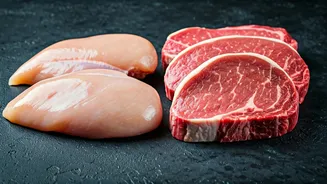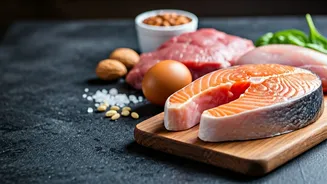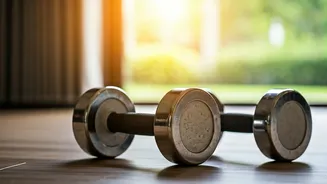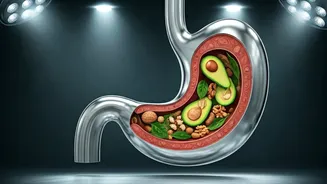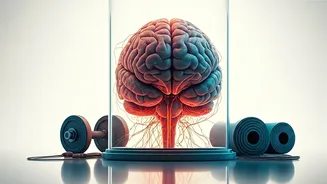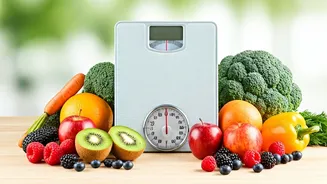Protein Power: Explained
Protein is an essential nutrient, vital for repairing and building tissues, including muscles. It's composed of amino acids, the building blocks your body
uses. The quality of a protein depends on its amino acid profile and digestibility. When you exercise, especially strength training, your muscles experience microscopic damage. Protein intake is crucial to repair this damage, which leads to muscle growth. Different protein sources offer varying levels of other nutrients, such as fats and carbohydrates, which can also affect your overall health and fitness goals. To optimize muscle development, it's vital to consider both the type and the amount of protein you consume, and how it aligns with your exercise regime.
Lean Protein's Advantage
Lean proteins are characterized by their lower fat content, often providing more protein per calorie compared to high-fat sources. Examples include chicken breast, turkey, fish like cod or tilapia, egg whites, and certain cuts of lean beef. These proteins are beneficial because they offer a significant protein boost without the added fats, making them a great choice for those aiming to reduce their overall calorie intake while still supporting muscle development. Consuming lean protein helps prevent excess fat storage, essential when trying to lose weight or maintain a lean physique. Additionally, many lean protein sources are rich in other beneficial nutrients, such as iron and vitamin B12, supporting overall health and energy levels. The focus on lean options is helpful during cutting phases or for individuals who are monitoring their fat consumption closely. It's an excellent way to support muscle growth without unwanted additional calories, helping you achieve a better body composition.
High-Fat Protein: Defined
High-fat protein sources include items like fatty cuts of beef, pork, salmon, whole eggs, and full-fat dairy products. These foods offer protein, but also contain a higher amount of fat, including saturated and sometimes unsaturated fats. The type of fat present and the overall nutritional profile varies depending on the source. High-fat proteins can support hormone production, crucial for muscle growth and recovery, as well as providing energy because fat is a source of calories. However, they also pack more calories per serving. This is where portion control becomes important, especially for those looking to manage their weight. Considering the type of fat is just as important as the quantity. For instance, omega-3 fatty acids found in salmon are beneficial for reducing inflammation and improving overall health. Consuming high-fat protein can be part of a balanced diet, but monitoring the intake and the source's fat profile are very important.
Comparing the Options
When comparing lean and high-fat protein, the choice depends on your specific fitness goals and dietary preferences. Lean proteins are often preferred when aiming for weight loss or a lower-calorie intake while still focusing on muscle growth. They offer an efficient way to get protein without the additional fats. High-fat proteins, on the other hand, can be advantageous for individuals requiring a higher overall calorie intake or for those on specific diets, such as a ketogenic diet, where fat is a primary energy source. It is crucial to look at the other nutrients and the types of fats. High-fat protein can also contribute to satiety, potentially helping manage hunger levels. Balancing these factors will help determine the best protein choice. Individuals should also consider any dietary restrictions, such as allergies or specific health conditions, to choose the most appropriate protein sources. The correct choice isn't necessarily one over the other. The most effective approach generally includes a balance of both types, adjusting the ratio according to one's requirements.
Meal Planning Strategies
Effective meal planning involves incorporating both lean and high-fat protein sources to create a balanced diet. Start by considering your overall calorie and macronutrient targets. You can include lean proteins like chicken breast and turkey in your main meals to meet protein requirements with minimal fat content. Supplement these with high-fat protein sources such as salmon or eggs, to get essential fatty acids and variety. Plan meals based on the timing of your workouts and recovery needs. After workouts, lean protein sources are often preferred as they support rapid muscle recovery. Throughout the day, include a mix of both types. This ensures you're meeting your protein needs while getting varied nutrients and fats. Remember to consider your total daily intake of calories, protein, fats, and carbohydrates to maintain a well-balanced diet. Regular assessment and adjustments based on your progress and body’s response will help refine your eating habits and maximize muscle-building effectiveness.
Consider Personal Needs
Individual nutritional needs depend on factors like activity level, body composition goals, and existing health conditions. Active individuals, particularly those engaged in regular resistance training, may require a higher protein intake, irrespective of the fat content of their sources. People aiming to lose weight may benefit from leaning towards lean protein choices to manage their calorie intake. Those focusing on bulking may include more high-fat options for additional calories to support muscle development. Health conditions, such as heart disease or high cholesterol, may influence your choice of protein and the type of fats consumed. Consulting with a healthcare professional or a registered dietitian is beneficial to get personalized guidance. Professional advice helps in customizing your dietary plan to suit your individual needs and achieve the best results. It ensures you’re making informed decisions that align with your overall health objectives.
Conclusion: Protein Power
Both lean and high-fat protein sources have their place in a balanced diet aimed at building and maintaining muscle. Lean proteins excel in providing protein without excessive calories, making them ideal for weight management and recovery. High-fat proteins provide extra calories, which is helpful in building muscle and providing crucial nutrients. Success depends on the quality of your protein sources, overall dietary patterns, and aligning them with individual fitness goals. Prioritize incorporating a variety of protein sources to meet your needs and support your overall well-being. Ultimately, understanding how to integrate both lean and high-fat proteins effectively will help you optimize your muscle-building efforts and lead to achieving your desired fitness outcomes.
